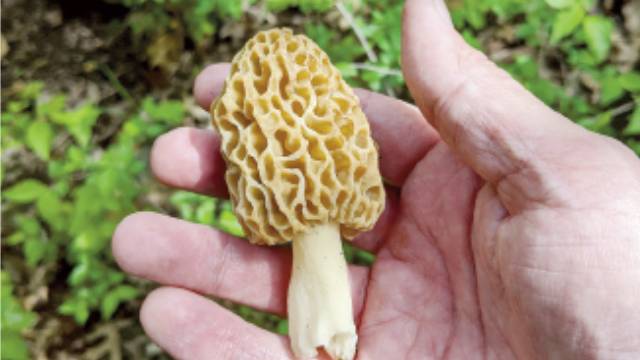By Carol Stiffler
Now that our tiny, encore winter is over, the weather is just right for morel mushrooms to appear on the forest floor. Popping up under last year’s leaves, the prized fungi are already luring people into the woods.
Seney resident Johnny Bowler did a spot check for morels on Mother’s Day and found none yet.
“I think after the rain on Wednesday and the warm weather, it’s going to be great,” Bowler said. Bowler has been hunting for morels for about 40 years, focusing in the hardwood forests south of Seney.
Morels need decently warm, wet spring weather with days in the 60s and ground temperatures in the 50s. In northern Michigan, morel season usually hits in May. But that doesn’t necessarily mean you’ll find any.
Morel hunting is famously tricky for first-timers and amateurs, who have to not only find the woodland mushrooms, but also learn to tell true morels from false morels.
Skilled morel hunters advise to look near fallen elm trees but also say the sought-after mushrooms can basically pop up anywhere. Michigan’s Department of Natural Resources website has a map for morel hunters, showing last year’s burn sites – another setting that can yield mushrooms.
Then there’s the task of figuring out what is and isn’t a morel.
Real morels have a clean, hollow stem, and an oval cap that is deeply pitted, kind of like a peach pit. False morels have a cap that looks more like brains and have fuzz inside the stem. The false morels are considered poisonous, though plenty of foragers dispute that.
“The first one is the hardest,” Bowler said. “After that it’s easy peasy.”
Most mushroom hunters, including Bowler, recommend soaking morels overnight in salt water to clean them and help rid the pits of bugs. Champion morel hunter Anthony Williams of Boyne City taught a morel hunting class at the Engadine Library last spring and advises keeping them dry and using a paintbrush to clean out the cavities in the cap.
However you treat them, Bowler promises they’re delicious. He recommends rolling them in flour, sprinkling them with salt and pepper, and frying them.
“Nothing compares to a morel,” he said.







